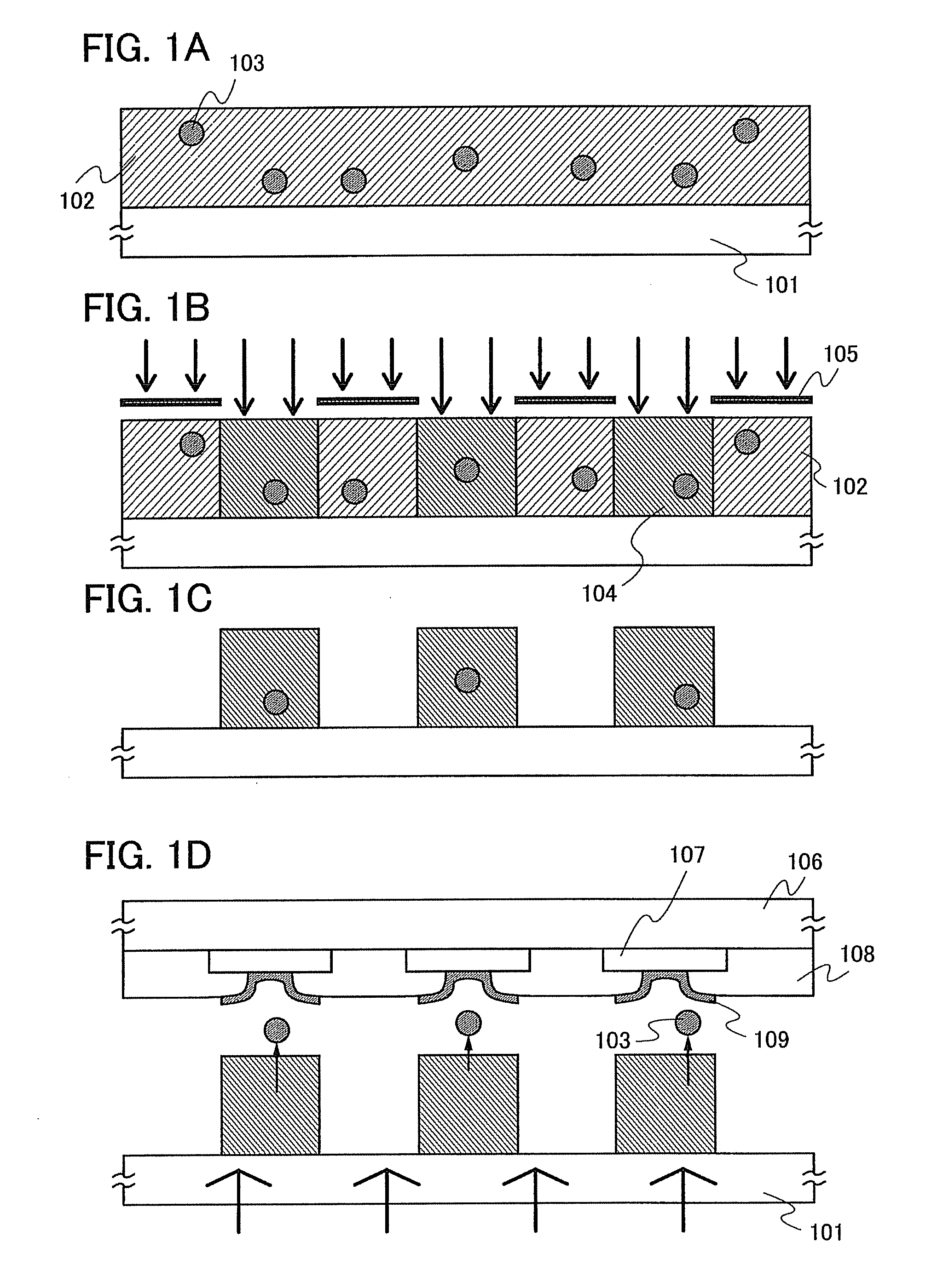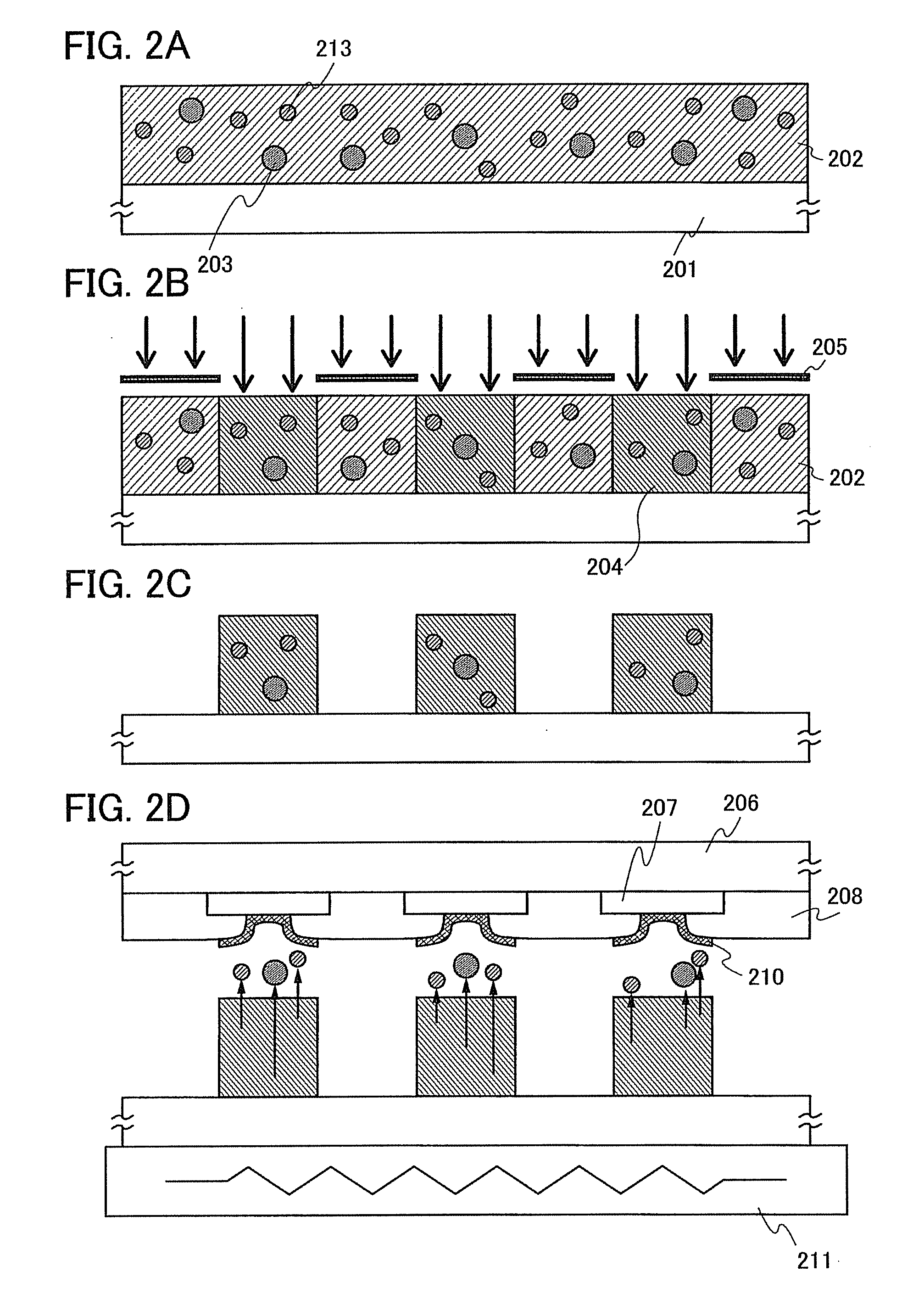Manufacturing method of light-emitting device
a manufacturing method and light-emitting technology, applied in the direction of semiconductor/solid-state device details, electrical equipment, coatings, etc., can solve the problems of difficult method use, limited layer thickness distribution and variation, and difficult to improve etc., to achieve the effect of reducing the risk of deterioration, and improving the accuracy of positional alignment for selective deposition
- Summary
- Abstract
- Description
- Claims
- Application Information
AI Technical Summary
Benefits of technology
Problems solved by technology
Method used
Image
Examples
embodiment modes
[0063]Embodiment Modes of the present invention will now be described.
embodiment mode 1
[0064]A manufacturing method of a light-emitting device is described with reference to FIG. 1A to FIG. 1D.
[0065]A first substrate 106 and a second substrate 101 are prepared first. The first substrate 106 is a substrate to be provided with a light-emitting element, and the second substrate 101 is a substrate used for forming a second layer including an organic compound over the first substrate 106 (the second substrate 101 is also referred to as a plate). As the second substrate 101, a substrate having a light-transmitting property can be used.
[0066]On the second substrate 101, an application liquid, i.e., a liquid in which an organic compound 103 (or a precursor of the organic compound 103) is dissolved or dispersed in a solvent is applied by a wet process, e.g., a spin coating method, a spray coating method, a dip coating method or the like. The organic compound 103 is preferably soluble or dispersible in the solvent. The thickness and uniformity of the second layer to be formed o...
embodiment mode 2
[0086]Plural types of organic compounds can be used, although Embodiment Mode 1 has described the example in which one type of organic compound is used. Embodiment Mode 2 will describe an example in which co-deposition is conducted using plural types of organic compounds.
[0087]A first substrate 206 and a second substrate 201 are prepared first. The first substrate 206 is a substrate to be provided with a light-emitting element, and the second substrate 201 is a substrate used for forming a second layer 210 including plural types of organic compounds over the first substrate 206. As the second substrate 201, a quartz substrate, a glass substrate, a ceramic substrate, a metal substrate or the like can be used.
[0088]On the second substrate 201, an application liquid, i.e., a liquid in which a first organic compound 203 (or a precursor of the organic compound 203) and a second organic compound 213 (or a precursor of the organic compound 203) is dissolved or dispersed in a solvent is app...
PUM
| Property | Measurement | Unit |
|---|---|---|
| width | aaaaa | aaaaa |
| distance | aaaaa | aaaaa |
| distance | aaaaa | aaaaa |
Abstract
Description
Claims
Application Information
 Login to View More
Login to View More - R&D
- Intellectual Property
- Life Sciences
- Materials
- Tech Scout
- Unparalleled Data Quality
- Higher Quality Content
- 60% Fewer Hallucinations
Browse by: Latest US Patents, China's latest patents, Technical Efficacy Thesaurus, Application Domain, Technology Topic, Popular Technical Reports.
© 2025 PatSnap. All rights reserved.Legal|Privacy policy|Modern Slavery Act Transparency Statement|Sitemap|About US| Contact US: help@patsnap.com



